
All categories
Featured selections
Trade Assurance
Buyer Central
Help Center
Get the app
Become a supplier

(613 products available)






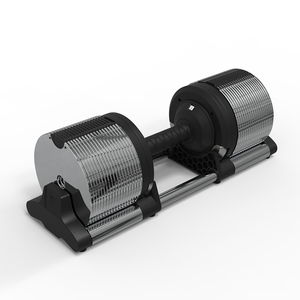
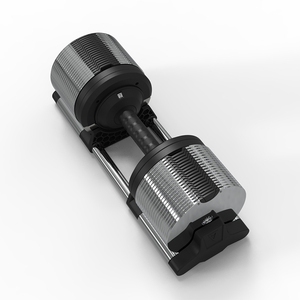
































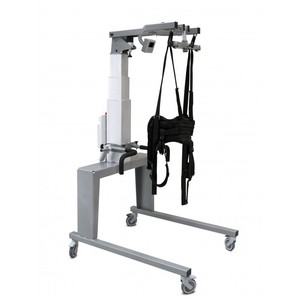



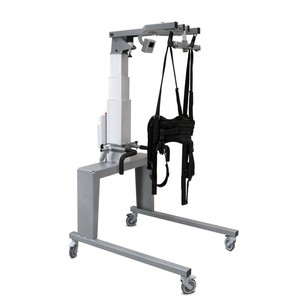
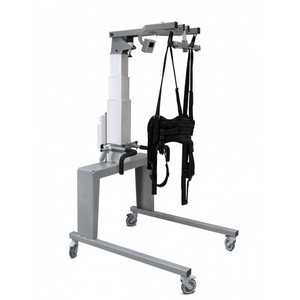
There are several types of unweighting systems used in different fields to reduce or eliminate the effects of gravity on objects. Each type is designed for specific applications, ranging from aerospace testing to rehabilitation therapy. Here’s a rundown on the most common unweighting systems:
Hydraulic and pneumatic systems use fluid or air pressure to counteract an object's weight. These types of systems are common in industrial settings or aerospace engineering. They are often used to lift heavy machinery or in experiments where an object needs to be moved without it experiencing the full force of gravity. The precision control offered by hydraulic and pneumatic systems makes them ideal for such delicate operations.
Elastic unweighting systems employ elastic materials, such as ropes or belts, to distribute an object's weight partially. These are often used in rehabilitation therapy, such as the AlterG treadmill. The elastic bands around the legs partially reduce the weight felt by the legs, thus allowing for lower-impact exercise without the full strain of gravity.
Mechanical counterweight systems are the simplest as well as the most widely used. These systems use a counterweight to balance the weight of an object. Mechanical counterweights are widely used in cranes, elevators, and other heavy machinery. These systems offer simple and straightforward solutions to reduce the risks of lifting heavy objects.
Maglev unweighting systems use magnetic fields to counteract the force of gravity on an object. These systems are mostly found in high-tech applications such as transportation systems. They can also be used in scientific experiments where friction needs to be minimized to achieve ultra-lean movements. These systems are relatively expensive and are only used in very specialized applications due to their high cost and sophisticated technology.
Aerodynamic unweighting systems employ streams of air to lift an object partially off the ground. They are mainly used in situations where precision movement control is necessary. Examples of applications include handling fragile items in an industrial environment or in research labs where moving delicate instruments needs to be improved.
As far as the design and materials used in unweighting systems are concerned, the choice influences performance, durability, and application suitability. Also, unweighting systems employ various design principles and materials based on their type and intended application. Below is a list of the major materials and designs in the systems:
The structural components of an unweighting system include the frame or platform that supports the mechanism. The choice of materials for these components depends on several factors, including strength, weight, and flexibility. Steel is widely preferred due to its exceptional strength and durability. However, in applications where weight is a critical factor, such as in aerospace or robotics, lighter materials such as aluminum or titanium are favored. In contrast, composite materials like carbon fiber provide high strength-to-weight ratios and are often employed in high-performance or sensitive environments.
Elastic elements are key design features in pneumatic unweighting systems. Materials such as rubber, latex, or specialized elastomers are used to make these components. These materials can be stretched or compressed multiple times without losing their initial shape or functionality. This property makes them ideal for use in systems where flexibility and durability are critical, particularly in medical and rehabilitation applications.
Ropes and pulleys are commonly used to create a mechanical advantage or to transfer load in unweighting systems. Buyers often prefer these components to be made from high-strength steel or synthetic fibers like Kevlar. These materials offer a unique blend of flexibility and strength, allowing them to support heavy loads without snapping or wearing down. Pulleys are typically made from durable metals or engineered plastics to reduce friction and decrease wear over time.
Elastic and mechanical unweighting systems are usually fitted with sensors and control systems to monitor and adjust the load distribution in real time. The electronic components include sensors, actuators, and controllers which are designed using lightweight and durable materials. These systems use sensors to continuously monitor load distribution, user input, or external factors. The information is then transferred to a controller that adjusts the system accordingly. Commonly used sensors include strain gauges, load cells, position encoders, or pressure transducers. In addition, also consider that the control systems are housed in protective casings made from high-impact plastics or aluminum, ensuring durability. These components are carefully designed to maintain functionality while minimizing weight and power consumption.
Unweighting systems are beneficial in a variety of scenarios across multiple industries, providing advantages in fields ranging from healthcare to space exploration. Below are the most common ways the system is implemented:
These systems are used to reduce load on patients' limbs during physical therapy. The conditioned unweighting enables patients to engage in rehabilitation exercises while bearing less weight, reducing pain, and allowing for quicker recovery times. This application is particularly valuable for rehabilitation after injuries or surgeries.
Unweighting systems allow engineers to test the behavior of spacecraft or components in a simulated low-gravity environment. For instance, using pneumatic systems to study how a satellite orbits or how a space vehicle behaves when landing on a celestial body. This testing is critical for ensuring the success of space missions.
They are used when moving large and heavy products in warehouses and distribution centers. For example, mechanical counterweight systems can balance the weight of heavy items on conveyor belts, allowing smoother and safer transport. This reduces worker strain and the risk of equipment failure.
Unweighting systems are heavily used when lifting or manipulating objects during production. For instance, hydraulic systems to lift heavy car parts or elastic band systems to bend fragile metal pieces. They improve efficiency while reducing the risks of employee injuries or hardware breakdowns.
These systems help scientists control and manipulate delicate instruments. For instance, magnetic levitation systems to study micro-particles without the interference of earth’s gravitational pull. They enable precision experiments that would otherwise be impossible.
There are several factors to consider when selecting an unweighting system to ensure it meets the specific requirements of the intended application. Here are the most important criteria:
Consider the primary application for which the system will be used. Is it for rehabilitation, aerospace testing, or transportation? Each application has different requirements and operating conditions. For example, elastic systems work well in healthcare applications, while hydraulic systems are better suited for aerospace engineering because of their accuracy and strength.
Ensure the system can handle the required load or weight range for the intended application. Systems with a higher load capacity are operationally effective, while those intended for lighter applications will be less energy-consuming.
Unweighting systems use different mechanisms to operate. For instance, pneumatic and hydraulic systems offer great control and precision in weight reduction, while mechanical counterweight systems possess a more straightforward design. Magnetic levitation systems are complex but ideal for low-friction applications. Consider the benefits and drawbacks of each type to ensure the system can adequately fulfill its purpose and requirements.
Assess the area where the system will be installed or used. Choosing an unweighting system that fits is ideal, especially regarding design and functionality. In addition, consider the energy source needed to power the system. Hydraulic and pneumatic systems require more energy to operate than mechanical counterweights. The source of energy will also affect the system’s sustainability and operational cost.
Take into consideration the extent of maintenance that will be required. Systems like pneumatic and hydraulic ones consume more time when being maintained than mechanical systems. Also, consider the operating environment. For example, highly corrosive or extreme-temperature environments will require more durable materials. Lastly, evaluate the system's noise level, particularly when used in sensitive environments, such as hospitals.
A1: In industrial settings, hydraulic and pneumatic unweighting systems are preferred due to their high precision and efficiency. Mechanical counterweight systems are also popular for their simplicity and reliability. Both types are used to enhance worker safety and reduce mechanical strain when lifting heavy objects.
A2: In rehabilitation, the primary function of an unweighting system is to decrease the impact of gravitational force on a patient’s body during physical therapy. This allows individuals to practice movements with less stress on their joints and muscles, ultimately aiding in quicker recovery and reduced pain.
A3: Several factors influence selecting an unweighting system, including the specific application (like rehabilitation or aerospace testing), load capacity, operating environment, required precision, energy efficiency, and maintenance demands. Evaluating these factors ensures the chosen system effectively meets the needs of its intended use.
A4: Magnetic levitation (Maglev) unweighting systems are ideal for applications requiring low friction, as they use magnetic fields to suspend an object without contact. This ability to eliminate friction makes Maglev systems especially useful in precision-dependent fields like scientific research and advanced manufacturing.
A5: As much as maglev systems are complicated and expensive, they require high-precision magnetic fields generated through powerful electromagnets or superconducting magnets. These materials are then supported by materials such as copper, aluminum, and niobium-titanium alloys to create the unique magnets used in Maglev systems.